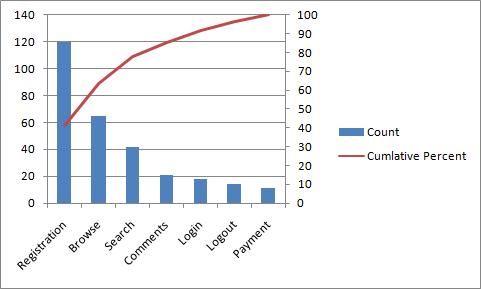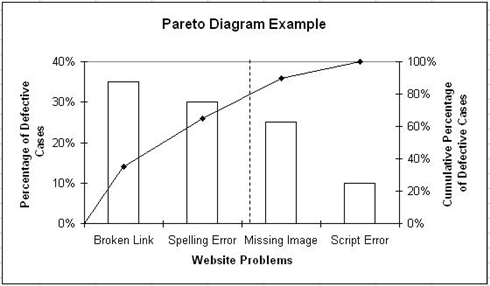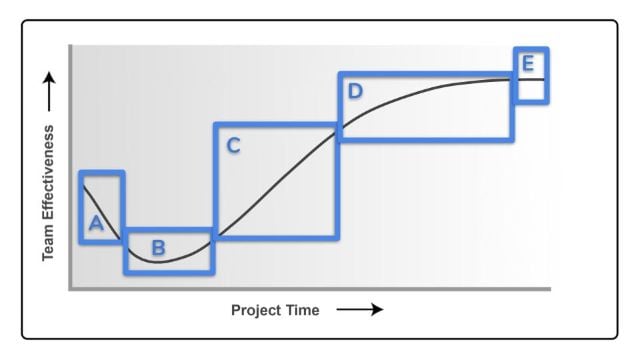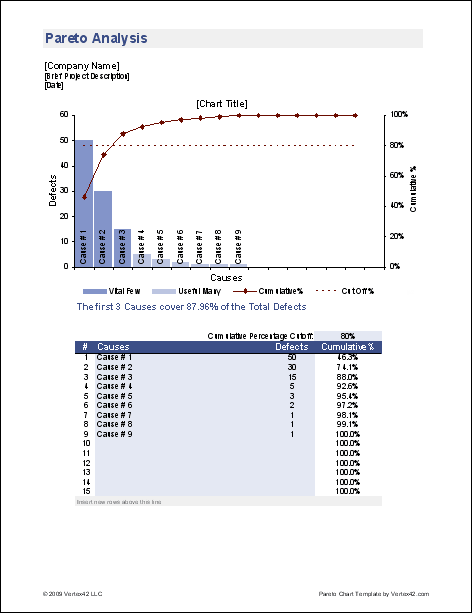43 pareto diagram pmp
Ishikawa Diagram Pareto chart Project Human Resource Management Resource Histogram Staff Acquisition Chart ... "I have passed my PMP exam! Really appreciate for this free resources. Practicing PMP questions on my mobile is so easy with this site." — Kamal Shankar (India), Team Lead "I found ... Project management use cases for Pareto charts. Aside from analyzing economics and quality issues, the Pareto principle and a Pareto chart can be useful in project management and productivity. You can use it to analyze task lists and prioritize the few important ones that will have the most significant results.
PMP aspirants need to understand what all 7 of these quality tools do and when to use them for their PMP exam. In brief, the 7 Basic Quality Tools, or "7QC Tools", are: Flow Charts. Histogram. Cause and Effect Diagrams. Check Sheets. Scatter Diagrams. Control Charts. Pareto Charts.

Pareto diagram pmp
Pareto Charts and the 80/20 Rule. A Pareto Chart (or Pareto Diagram) is a specific type of Histogram, or vertical bar chart, ordered by frequency of occurrence. Pareto Chart is one of the Seven Basic Quality Tools. Pareto Chart shows the number of defects generated by type or category of the identified cause, and helps the project team focus on ... We are publishing series of articles on PMP topics to help the PMP exam preparation. One of the critical and most important concept in preparing for the PMP exam is Quality Management tools. In this article we are going to explain you top 7 tools for quality management. TRY NOW : 50 PMP Practice Questions […] A Pareto diagram/chart helps focus attention on the most critical issues. It prioritises potential "causes" of the problems. It is referred to as 80/20 rule that 80% of problems or defects are most often due to 20% of the causes. at 7:06 AM. Email ThisBlogThis!Share to TwitterShare to FacebookShare to Pinterest. Labels: Project Quality Management.
Pareto diagram pmp. PMP: Cause-and-Effect Diagrams and Pareto Diagrams | http://www.pluralsight.com/courses/pmp-project-quality-managementPMP® – Project Quality ManagementThis ... December 25, 2020 - Pareto Chart When a project management ... and most efficient use of all of the information and data that is being gathered across the board. pmp preparation what is a pareto diagram a pareto diagram chart helps focus attention on the most critical issues it prioritises potential "causes" ... ID 2216 the principal use of a pareto diagram is to. As the project manager, you are preparing your quality management plan. You are looking for a tool that can demonstrate the relationship between events and their resulting effects. control chart Pareto diagram scatter diagram Statistical sampling PMP Exam Set G – Q21 You are a Project Manager working on a project to create high efficiency electric motors for a company introducing a new electric golf cart.
A Pareto chart is a special type of histogram that represents the Pareto philosophy (the 80/20 rule) through displaying the events by order of impact. It helps you understand the high impact causes. Pareto diagram helps the project management team quantify and categorize defects according to sources A histogram is a bar graph that illustrates the frequency of an event occurring using the height of the bar as an indicator. A Pareto chart is a special type of histogram that represents the Pareto philosophy (the 80/20 rule) through displaying the events by order of impact. See all posts in our PMP Concepts Learning Series. The Pareto Chart is a simple tool that can help you become a better project manager. It is a special type of histogram that helps to visualize a "rule" known as the Pareto Principle.. What is the Pareto Principle? The Pareto Principle was discovered by a 19th century Italian economist and sociologist named Vilfredo Pareto (1848 - 1923). When he was researching the distribution of wealth in ... July 30, 2020 - Pareto chartPareto Diagrampmp®Quality AssuranceQuality PlanningSeven Basic Quality Tools ... Project Management Professional (PMP)® Exam Aspirant’s Definitive Guide to PMP® Exam Changes 2021 05/09/2020
November 24, 2009 - Perhaps you are already familiar with Pareto charts and with creating Pareto charts in Microsoft Excel. However, maybe you are unsure when to use a Pareto chart and whether a Pareto chart can help you in your project. In this article by Ronda Bowen, you will find out when you should use Pareto ... Pareto Diagram Example. Also read: Quality Control Data Representation Tools Pareto Analysis. Pareto analysis is a quantitative tallying of the number and types of defects that occur with a product or service. Analysts use this tally to produce a vertical bar chart that displays the most common types of defects, ranked in order of occurrence from left to right. Pareto Analysis. A technique used to identify the few factors that have the greatest impact on an outcome, result, or on measures of quality, satisfaction or performance. Separating these "vital few" from the "trivial many" is generally known as the "80/20" rule. Applying this rule to sources of problems would mean that, on average, 80 percent ... Pareto Diagram Pmp. pmp preparation what is a pareto diagram a pareto diagram chart helps focus attention on the most critical issues it prioritises potential "causes" of the problems it is referred to pmp study part 16 quality assurance and quality relates to seek learning online pmp course learn with flashcards games and more — for free.
Introduction - BackgroundAs the pace of business processes speed up, and the need to maintain the latest technological advantage over our competitors is skyrocketing, quality products and services must be maintained for real long term survival in any industry today.
A Pareto diagram is a simple bar chart that ranks related measures in decreasing order of occurrence. The principle was developed by Vilfredo Pareto, an Italian economist and sociologist who conducted a study in Europe in the early 1900s on wealth and poverty. He found that wealth was concentrated in the hands of the few and poverty in the ...
A Pareto chart, also called a Pareto graph, is a vertical bar graph in which values are plotted in decreasing order of relative frequency from left to right.
Pareto charts are used as a valuable tool in project management, notably in Six Sigma. Get Six Sigma Training from Industry Expert Trainer - Online, Live Online and Classroom Training . Pareto Chart in Six Sigma Explained in Detail . Pareto chart in six sigma is used to show the frequency the phenomena occur at.
Using the Pareto Principle in Project Management. The Pareto Principle, also known as "The 80-20 rule", states that in many situations, 80% of the effects originate from 20% of the causes. This rule has been applied to economics, criminology, software programming, and business.

Applied Sciences Free Full Text Improving A Manufacturing Process Using The 8ds Method A Case Study In A Manufacturing Company Html
October 18, 2021 - Pareto Analysis or the 80/20 rule enables you to see what 20 percent of cases are causing 80 percent of the problems on a project.
This is where the Pareto chart comes to rescue. It is an amalgamation of bar and line graphs, which significantly makes the job of project management easier. Its project management diagrams aid in improving team communication and are used primarily in Six Sigma evaluation. 5. Cause & Effect Chart
Pareto diagram. Finally, the seventh tool of the seven basic quality control tools is a pareto diagram / chart . Pareto diagrams exists as special forms of vertical bar chart. A pareto chart consists of bars and line graphs. Bars in descending order in a pareto chart represent individual values. The line in pareto diagram represents cumulative ...
A Pareto diagram is a vertical bar chart that identifies the critical few from the uncritical many: A histogram, ordered by frequency of occurrence, that shows how many results were generated by each identified cause.. Pareto diagrams are used to identify the vital few sources that are responsible for causing most of a problem’s effects. The categories shown on the horizontal axis exist as a ...
The Pareto principle is very helpful in project management. A Pareto chart is a histogram that divides discrete observations into several categories to identify the “vital few.” The phrase “vital few” is used to describe the elements that have the maximum impact on the solution.
The next chart on this list of popular project management charts is the Pareto chart. Project managers use this type of chart when they need more information about their project than what a typical graph has to offer. A Pareto chart is the combination of a bar graph and a line graph. By using this chart, you can highlight some specific factors ...
Dear Visitor, I am a PMP (Project Management Professional), certified by the Project Management Institute since 2004. I have been managing dozens of projects, small and huge, successful and unsuccessful. This site is supposed to help you learn the required vocabulary of the project management world.
Pareto Diagrams - A Pareto chart or diagram is a type of histogram, but it arranges the results from most frequent to least frequent to help identify which root causes are resulting in the most problems. Histograms - Histograms are a special type of bar chart that shows you the distribution of data from a central tendency. It represents ...
July 21, 2021 - During my PMP exam preparations, I was a bit confused between a histogram and a Pareto chart. A Pareto Chart is just an advanced type of histogram. I will try to discuss all the concepts easily – Stay tuned! Pareto Charts is also known as the Pareto diagram, Pareto analysis.
The main intention of the Pareto diagram is to identify and arrange the data points in the ascending or descending order of their frequency. PMBOK says that a Pareto Diagram is a special form of vertical bar chart, and is used to identify the vital few sources that are responsible for causing most of a problem's effects.
Essentially the 80:20 rule means that focusing on the vital few yields larger gains than the trivial many.The Pareto chart is a tool to focus attention on priorities while trying to make decisions. It is a good communication tool that describes the data in a simple and easy-to-read bar diagram. The chart helps you to study and analyze the frequency or occurrences of an event in a process and ...
Pareto Chart (also known as Pareto Analysis or Pareto Diagram) is one of the seven basic tools of quality which helps to determine the most frequent defects, complaints, or any other factor. It is a visual tool widely used by professionals to analyze data sets related to a specific problem or an issue.

What Are The 7 Qc Tools Flowchart Histogram Pareto Chart These Are All The 7 Qc Tools 業務改善 Itコンサルティング Econoshift マイク根上
Pareto chart; Scatter diagram; ... Run Chart vs Control Chart for PMP® Exam. Run Chart: A Run Chart simply plots the data of a variable over time. Through analysis of a run chart, the following can be derived: changes / trends of the process over time; any pattern / cycle of the process;
Using Pareto charts, you will plot out the frequency of defects and sort them in descending order. In the chart above, most defects are caused by requirement ...
A Pareto diagram/chart helps focus attention on the most critical issues. It prioritises potential "causes" of the problems. It is referred to as 80/20 rule that 80% of problems or defects are most often due to 20% of the causes. at 7:06 AM. Email ThisBlogThis!Share to TwitterShare to FacebookShare to Pinterest. Labels: Project Quality Management.
We are publishing series of articles on PMP topics to help the PMP exam preparation. One of the critical and most important concept in preparing for the PMP exam is Quality Management tools. In this article we are going to explain you top 7 tools for quality management. TRY NOW : 50 PMP Practice Questions […]
Pareto Charts and the 80/20 Rule. A Pareto Chart (or Pareto Diagram) is a specific type of Histogram, or vertical bar chart, ordered by frequency of occurrence. Pareto Chart is one of the Seven Basic Quality Tools. Pareto Chart shows the number of defects generated by type or category of the identified cause, and helps the project team focus on ...


































Comments
Post a Comment